Chapter 3 | THE HIJAB
A good example of drapery is the Hijab, a headscarf. A Hijab can be worn in many ways and has become a stylish fashion item with its lush shapes and folds. In this chapter I want to teach you how to set up such a drawing. You can then use my tips to draw portraits from a photo or a live model who poses for you.
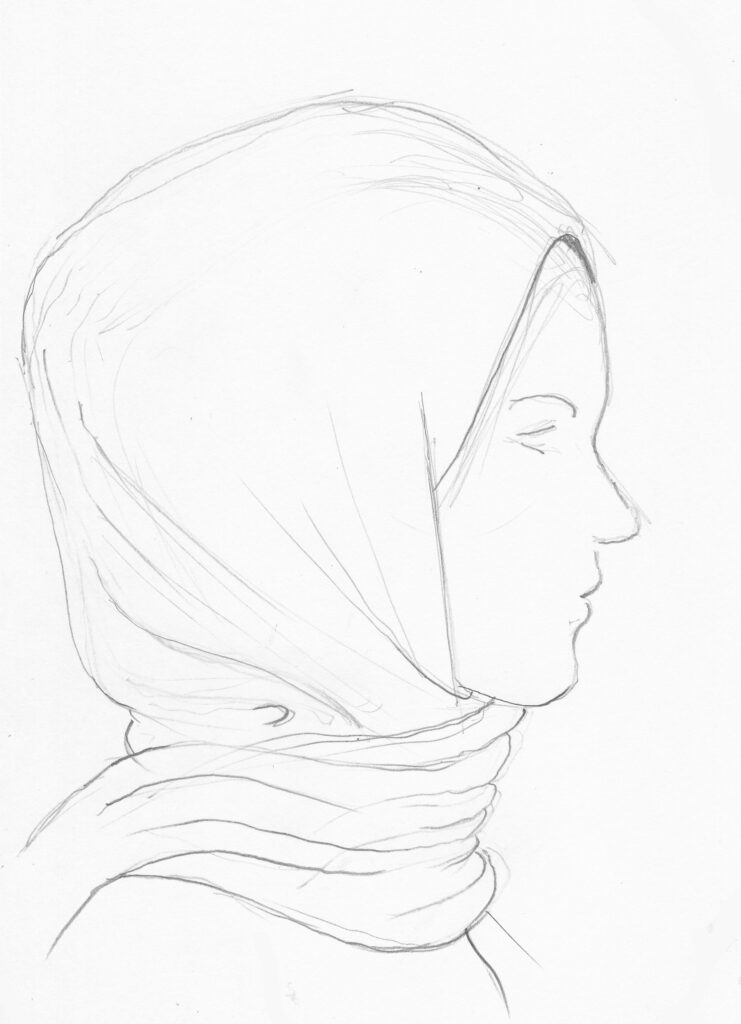
Exercise: copy one or more of the following examples. Always start lightly with the position of the head and shoulders and the most important contours (outline shapes) of the drapery. Only then do you draw details.
Example 1: a face with a headscarf seen from the side. Note how small the profile of the face is in relation to the whole head (see also Heads and Faces Lesson Part 1, Chapter 5, Level 2). Make sure the eyes are half way between the chin and the top of the head.
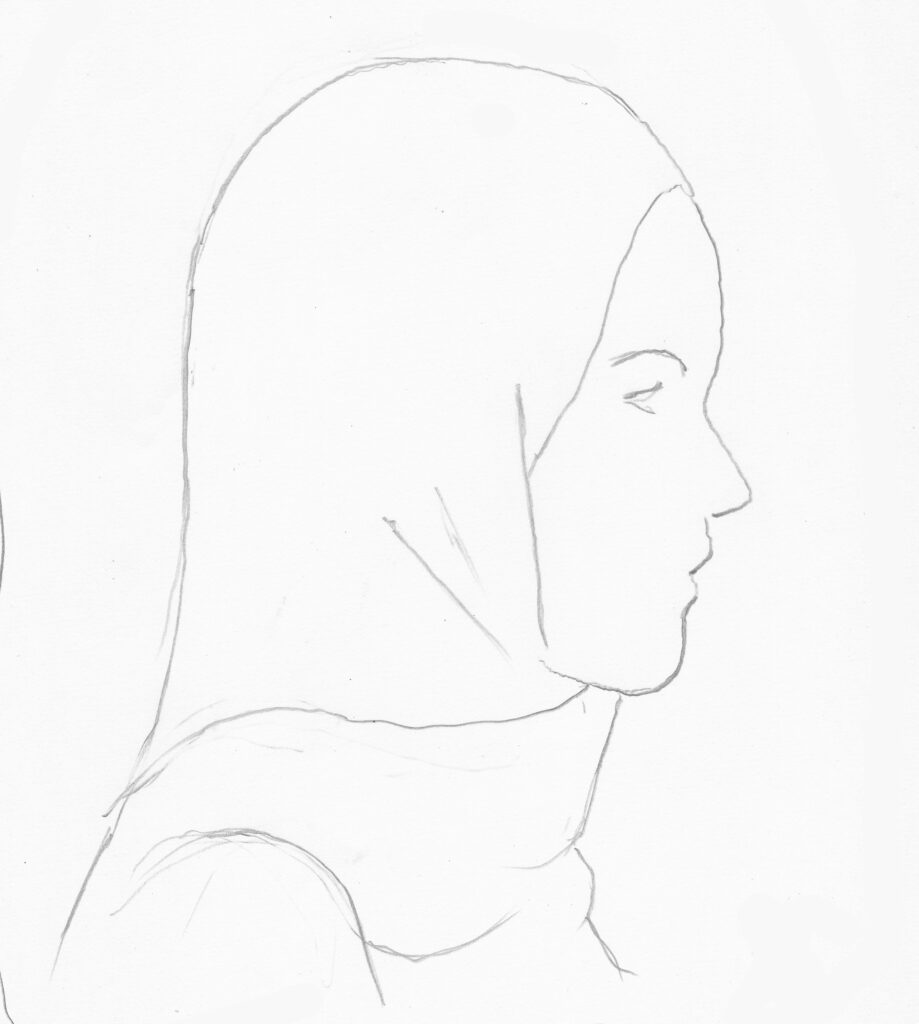
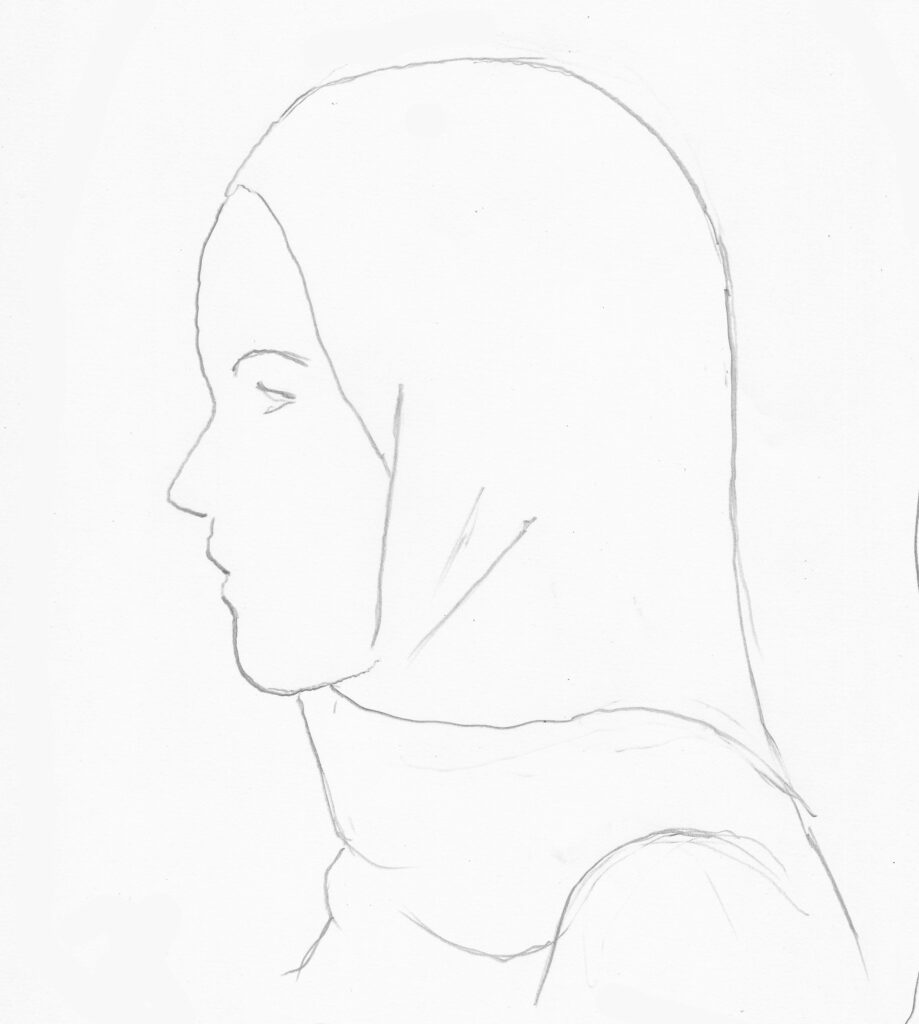
Example 2: sometimes women have a thick head of hair under their headscarf and maybe a tail. The headscarf then becomes much wider, especially at the back. See the blue and red assisting lines for the ratio. In this setup, too, only the most important contours and directions have been drawn, so no details yet.
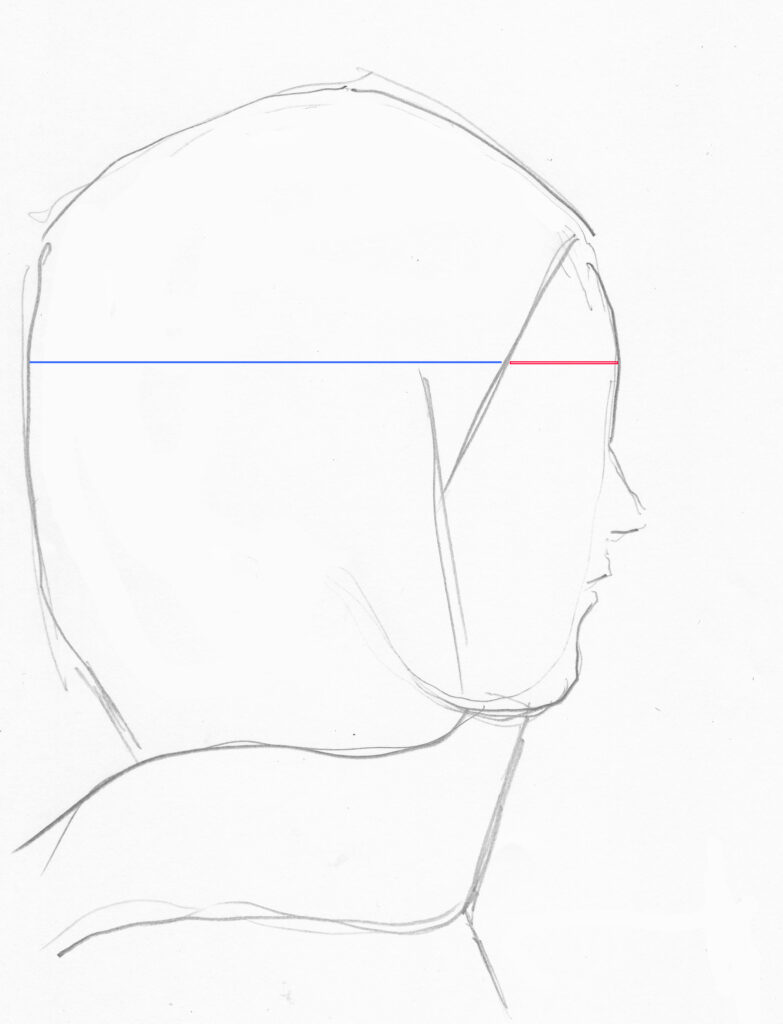
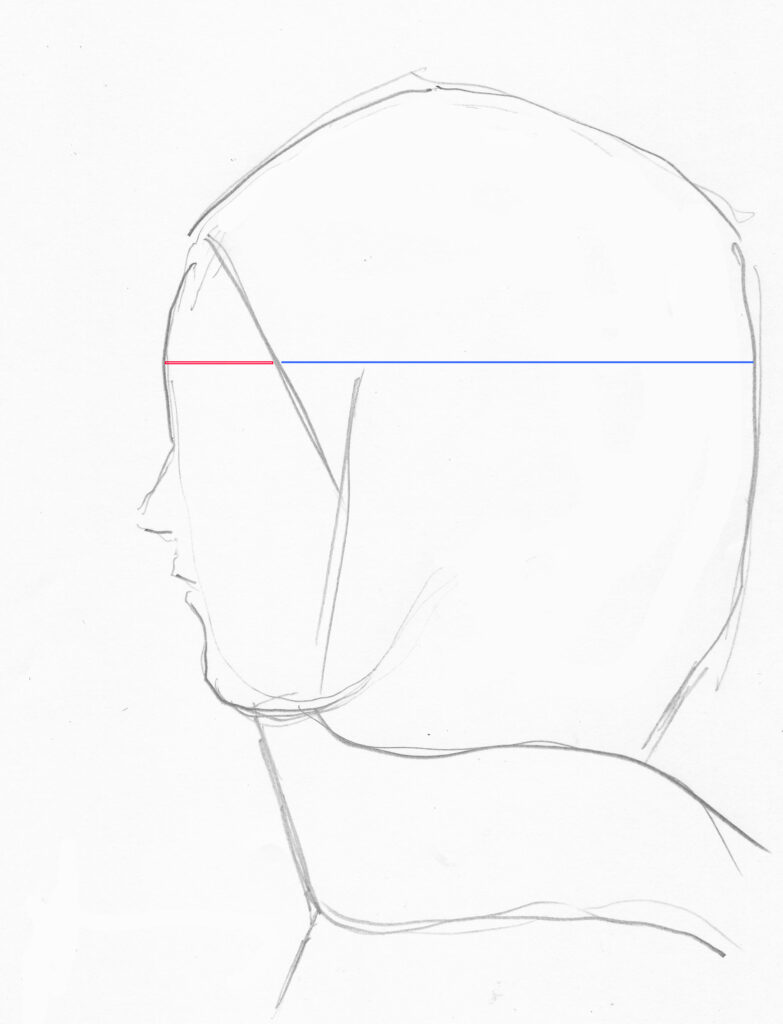
After having drawn the outlines, draw details of the drapery.

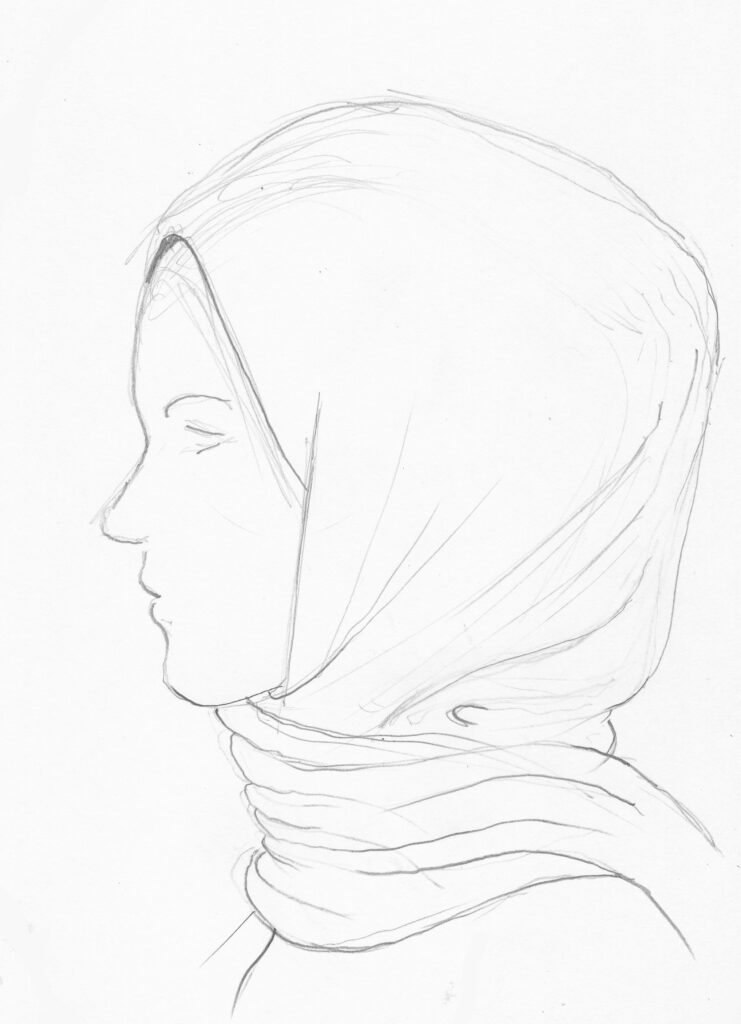
Example 3: For the face from the front, start with the egg shape of the head and the main contours of the drapery. Important in this example is the assisting line between shoulders. After a lightly drawn draft, you can draw details of the drapery.
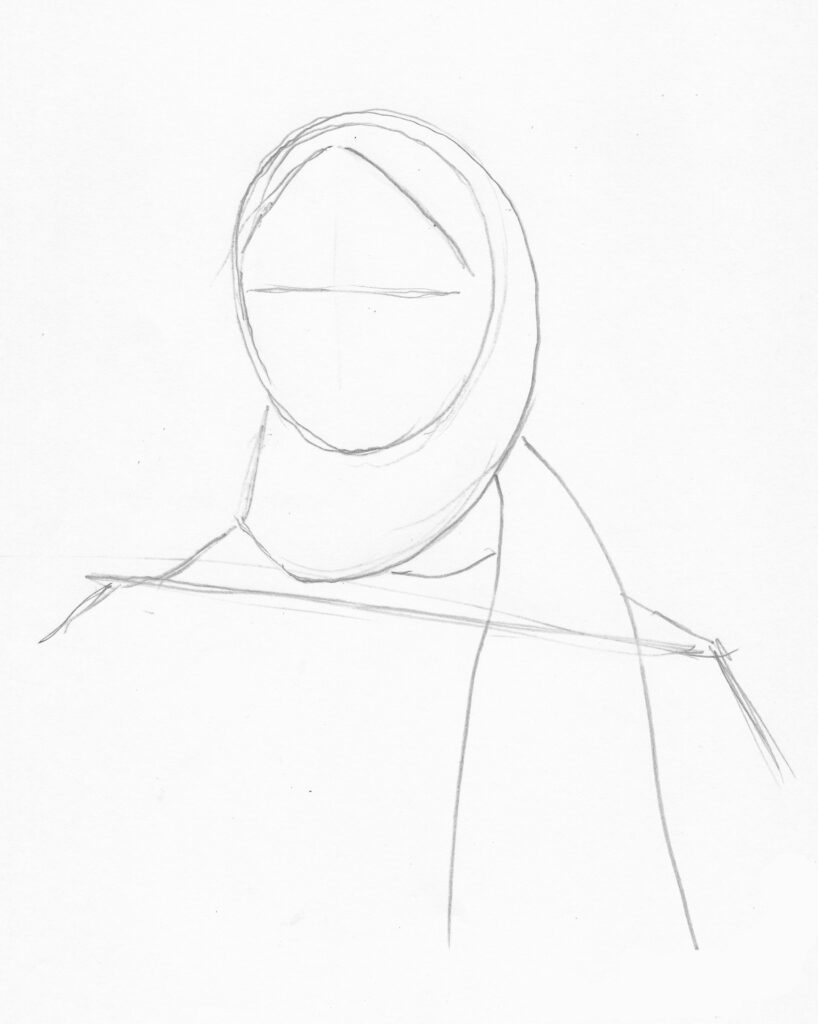
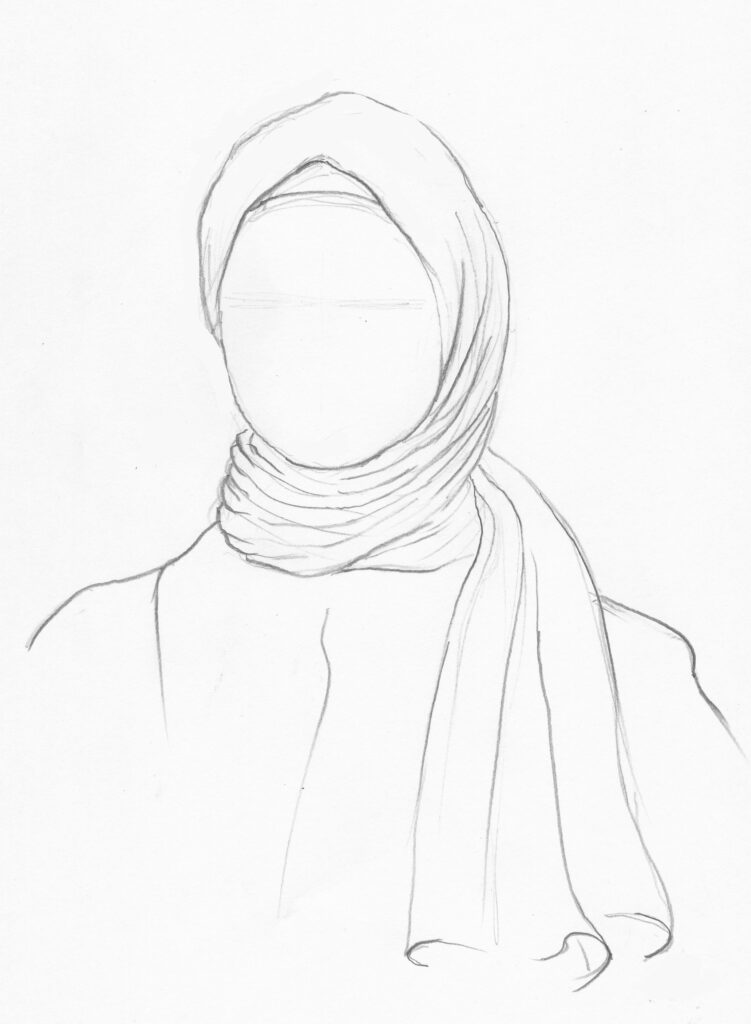
Example 4: In this setup the assisting lines are essential: one for the tilted position of the head (see Heads and faces part 2, chapter 2 level 3), one for the position of the shoulders and two for the directions of the upper arms. Only after you have the position of the figure reasonably well do you start drawing details of the drapery.
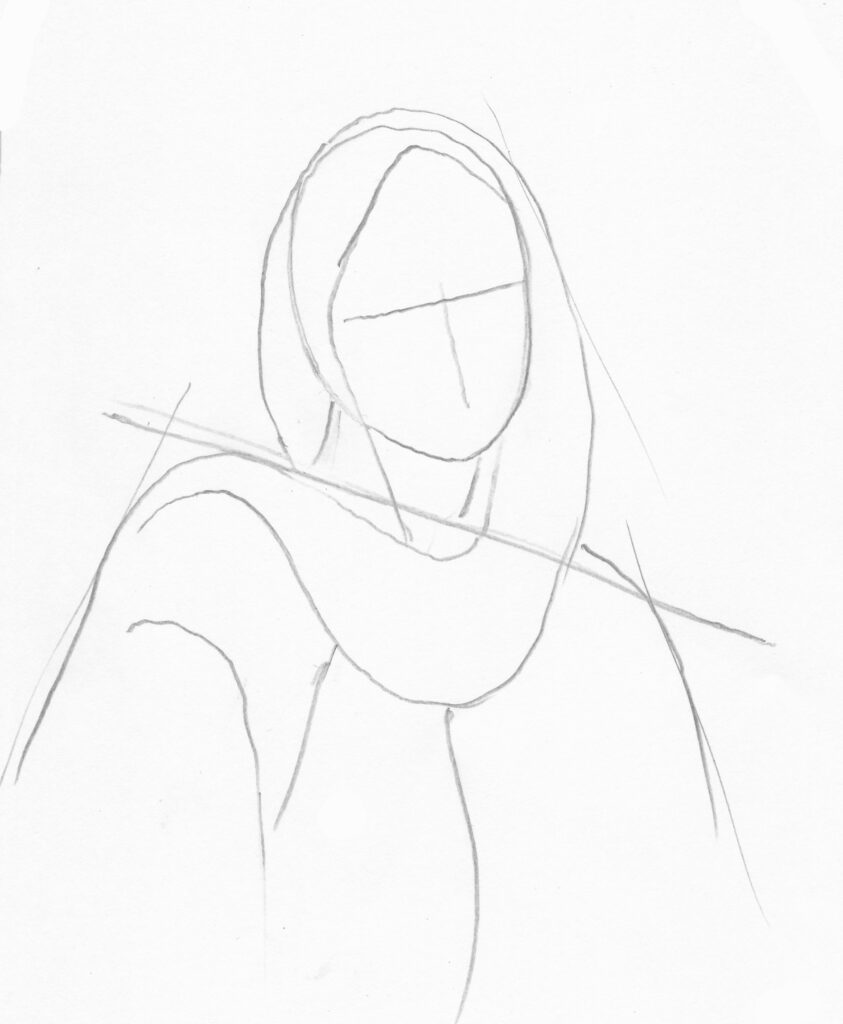

EXTRA 1: Find a friend/family member wearing a headscarf to draw. Try using the tips from this lesson (start with a general outline without details). To prepare, you can first take a few photos of your model in a pose you like.
EXTRA 2: Find painted examples of headscarves. You’ll find many of them in Christian paintings.

